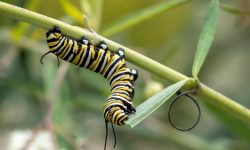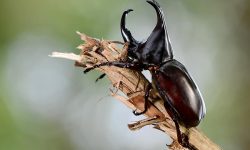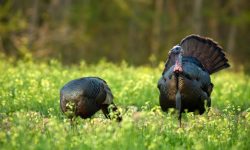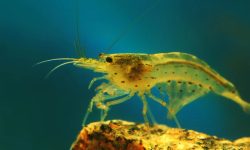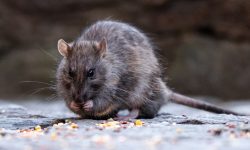Bobcats are some of North America’s most fascinating wild predators, known for their stealth, patience and ability to survive in forests, deserts, mountains and even suburban edges. Their diet is remarkably diverse, adapting to whatever prey is available throughout the year. As skilled hunters with powerful jaws, sharp claws and impressive night vision, bobcats feed on a wide range of animals, from small rodents to larger mammals depending on opportunity and habitat.
In the wild, bobcats are obligate carnivores, meaning they rely almost entirely on meat. Their diet changes with the seasons, shifting as prey populations rise and fall. In winter, they chase larger mammals when smaller prey becomes scarce, while summertime offers abundant rodents, birds and reptiles. Their adaptability makes them one of the most resilient predators in North America.
This detailed guide explores 20 foods bobcats hunt and consume, revealing how these wild cats survive, how their feeding behavior impacts ecosystems, and why their presence is essential for maintaining balance in nature.
Understanding the Bobcat Diet
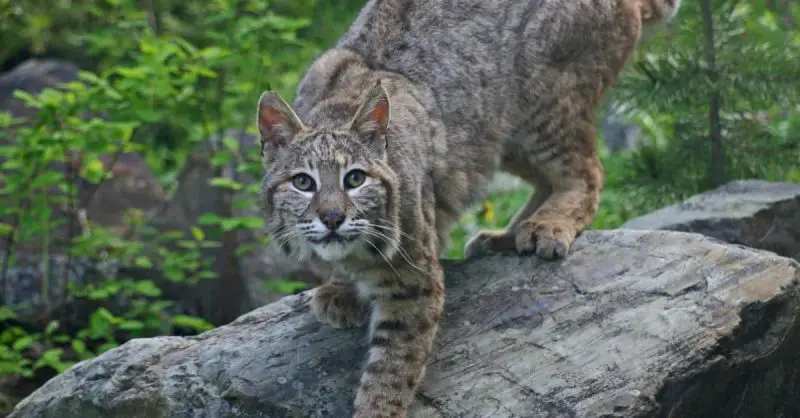
Bobcats are versatile predators with a diet shaped by habitat, climate and prey availability. They have strong predatory instincts and a unique ability to stalk prey quietly before making a swift attack. This strategy allows them to catch fast-moving animals such as rabbits, squirrels and birds. In areas with diverse wildlife, bobcats may shift their diet depending on what is easiest to catch. Their adaptability gives them an advantage over predators that rely on fewer prey species.
Bobcats also adjust their feeding behavior based on the season. During warmer months, small mammals and birds become abundant, giving them frequent hunting opportunities. In colder months, when prey hides or migrates, bobcats often rely on larger animals or weakened individuals struggling through harsh winter conditions. Because they hunt alone, they prefer prey small enough to overpower but large enough to provide several meals.
As carnivores, bobcats play a crucial ecological role in controlling populations of rodents, rabbits and other animals that reproduce quickly. By targeting abundant prey, they help maintain balance within ecosystems and prevent overgrazing. Understanding their diet offers insight into how bobcats live, thrive and contribute to healthy environments across their vast range.
20 Foods Bobcats Hunt and Consume
1. Rabbits
Rabbits are one of the most important food sources for bobcats across North America. Their abundance, size and predictable behavior make them ideal prey for these solitary hunters. Bobcats rely heavily on their stealth to approach rabbits before launching a quick and powerful attack.
Rabbit populations tend to boom in spring and summer, providing plentiful meals for adult bobcats and young kittens learning to hunt. A single rabbit can sustain a bobcat for an entire day, making it a highly efficient food source in the wild. The soft bones and lean meat are easy to digest, supporting strong muscles and overall health.
In winter, rabbits become even more valuable when smaller prey items hide or become inactive. Bobcats may follow tracks in snow or wait patiently near brush piles where rabbits seek shelter. Their ability to exploit seasonal rabbit behavior shows their impressive adaptability.
2. Mice
Mice provide a steady and abundant food source for bobcats, especially in forests and grasslands where populations surge throughout the year. Their small size makes them easy for bobcats to capture, requiring less energy compared to hunting larger mammals. Bobcats often catch mice during nighttime hours when both animals are more active.
Although a single mouse offers minimal calories, bobcats can consume several in one hunting session. They use their acute hearing to detect tiny rustling sounds in leaves or grass, allowing them to pinpoint and strike quickly. This makes mice essential food for juvenile bobcats practicing their hunting skills.
In ecosystems, bobcats help regulate mouse populations, preventing overpopulation that could harm vegetation or spread disease. Their predation keeps rodent numbers in check, maintaining a balanced environment.
3. Rats
Rats are a common prey item for bobcats living near wetlands, forests and even suburban areas. These larger rodents provide more nutrients than mice, making them a valuable food source when available. Bobcats often hunt rats along riverbanks, abandoned structures or dense vegetation where rats find shelter.
Rats offer rich protein and fat, which help sustain bobcats during high-energy activities such as mating seasons or long-distance roaming. Because rats reproduce rapidly, they provide a reliable food supply throughout the year, especially in human-adjacent habitats.
Bobcats play a beneficial ecological role by keeping rat populations under control. Their presence naturally reduces rodent infestations, which can help local ecosystems and even limit human–rodent conflicts.
4. Squirrels
Squirrels are agile and fast, but bobcats are skilled climbers and stalkers capable of ambushing them. Whether hunting ground squirrels or tree squirrels, bobcats patiently wait for the right moment before striking. Their ability to climb trees allows them to catch squirrels in branches or leap from concealed positions.
During autumn, squirrels become easier to hunt as they spend more time on the ground gathering nuts. Bobcats take advantage of this seasonal behavior to secure high-calorie meals that support them through winter. Squirrels offer a mix of lean meat and healthy fats, making them nutritionally beneficial.
Young bobcats often learn important hunting strategies by stalking squirrels, sharpening their reflexes and improving their climbing skills. This makes squirrels both a target and a training opportunity for developing predators.
5. Birds
Birds are part of the bobcat diet across forests, meadows and wetlands. Bobcats commonly hunt ground-feeding species such as quail, grouse and doves. They rely on stealth to approach birds before they take flight, launching rapid pounces to capture them.
In ecosystems with limited small mammals, birds become especially important. Their abundance during certain seasons provides bobcats with easy-to-digest protein. Even when birds can fly away, bobcats may target young, injured or distracted individuals that remain reachable on the ground.
Bobcats also raid nests when the opportunity arises, consuming eggs or nestlings. This behavior occurs more frequently in spring when birds are nesting in low shrubs or accessible areas.
6. Fawns
Bobcats occasionally prey on young deer, particularly fawns during their first weeks of life when they remain hidden and still. Although fawns are larger prey, bobcats can successfully take them down because they rely on surprise attacks and precise throat bites.
Fawns offer a substantial source of energy and nutrients, supporting adult bobcats during breeding seasons or lean winter months. A single fawn may provide multiple meals, allowing bobcats to reduce hunting effort temporarily.
While this predation may seem dramatic, it plays a natural role in ecosystems by preventing deer overpopulation. Bobcats primarily target small or weakened fawns, maintaining healthy herd dynamics.
7. Voles
Voles are another small mammal frequently hunted by bobcats. These rodents live in grassy fields, woodland floors and marshes, making them abundant in many bobcat habitats. Bobcats detect voles through sound and scent, lunging quickly to capture them.
Voles reproduce quickly, offering a constant food source. Their soft bodies and high moisture content make them easy for bobcats to digest, providing hydration as well as nutrition.
Because voles can cause significant plant damage in large numbers, bobcats help prevent ecological imbalance by naturally controlling these populations.
8. Snakes
Snakes, both venomous and nonvenomous, occasionally fall prey to bobcats. These cats rely on their agility and timing to avoid bites while delivering rapid killing blows. Bobcats typically target smaller snakes but may attack larger ones if opportunities arise.
Snakes provide dense protein and are most commonly eaten during warmer seasons when they are more active above ground. Bobcats may find snakes under rocks, logs or sunny clearings.
This predation helps regulate reptile populations and reduces potential dangers from venomous species in shared habitats.
9. Lizards
Lizards are common prey for bobcats living in desert, scrubland and warm climates. Their quick movements challenge bobcats to perfect their hunting accuracy. Bobcats often wait near rocks or vegetation where lizards sunbathe, striking when they least expect it.
Lizards are small but nutritious, supplying protein and moisture that support hydration in dry environments. They are especially valuable for bobcats living in arid regions where water sources are limited.
This prey type also teaches young bobcats coordination and timing, improving their overall hunting skills.
10. Frogs
Frogs and toads are part of the bobcat diet in wetlands, riversides and moist forests. Bobcats catch frogs by listening for calls or waiting near water edges where frogs gather. Frogs provide easily digestible meat suitable for adult and young bobcats.
Amphibians are particularly abundant in spring and early summer, giving bobcats a reliable food source during peak breeding seasons. Their high moisture content supports hydration during long hunts.
Bobcats help balance amphibian populations, which is especially important in ecosystems where frog numbers fluctuate dramatically.
11. Fish
Although bobcats primarily hunt land animals, they occasionally catch fish, especially in shallow streams or ponds. Their patience allows them to swipe fish out of the water with quick paw movements. This behavior is more common during droughts when fish become trapped in small pools.
Fish offer rich nutrients, including valuable fats that support energy levels. Bobcats may also scavenge leftover fish from otters or birds if fresh catches are unavailable.
In riparian ecosystems, fish consumption reflects the bobcat’s adaptability and willingness to diversify its diet.
12. Insects
Insects are not a primary food source for adult bobcats, but they often eat grasshoppers, beetles and crickets when other prey is scarce. Kittens may consume insects more frequently as they practice hunting small moving targets.
Despite their size, insects provide quick energy and important nutrients. In summer, when insect populations peak, bobcats may eat them opportunistically.
Insect consumption shows the bobcat’s ability to survive even when larger prey cannot be found.
13. Turkeys
Wild turkeys are occasionally hunted by bobcats, particularly young or injured individuals that cannot fly quickly. Bobcats rely on ambush tactics, attacking from behind cover or stalking until the right moment.
Turkeys provide large amounts of meat, making them rewarding prey when successfully captured. Their high protein content supports muscle development and long-term energy.
Although turkeys are strong birds, bobcats help regulate populations naturally by removing vulnerable individuals from the flock.
14. Carrion
Bobcats prefer fresh kills but will scavenge carrion when necessary. Carrion becomes especially useful in winter when hunting conditions become difficult and energy must be conserved. Bobcats may feed on remains of deer, rabbits or livestock.
Eating carrion helps bobcats survive harsh seasons without expending much energy. It also provides dense nutrients that would otherwise go to waste in the ecosystem.
By scavenging, bobcats contribute to natural cleanup processes, reducing the spread of disease and returning nutrients to the soil.
15. Grouse
Grouse are common prey in northern forests and mountain regions. Bobcats catch them by stalking quietly along the forest floor, striking before the birds can take flight. Their keen hearing helps them detect grouse scratching through leaves.
These birds offer lean but nutritious meat and are more vulnerable during snowy months when movement becomes restricted. Bobcats often hunt grouse along trails or under conifer branches.
Grouse consumption helps support bobcats during times when small mammals burrow deeply underground.
16. Ducks
Bobcats living near wetlands may prey on ducks, especially young or nesting individuals. They stalk ducks along shorelines, using tall grasses or reeds for cover before launching into a rapid chase.
Ducks offer rich fat content, making them valuable prey during colder seasons. They are also plentiful in migration periods, giving bobcats temporary access to abundant food.
This predation plays a natural role in regulating waterfowl populations and preventing overcrowding in marsh environments.
17. Chipmunks
Chipmunks are small but abundant prey for bobcats in wooded areas. Their quick darting movements challenge bobcats to use precision and speed during hunts. Bobcats often catch chipmunks near fallen logs, stone walls or forest edges.
Chipmunks offer lean protein and appear year-round, making them a reliable backup prey. Bobcats may catch several in a single hunting period during summer when chipmunks forage extensively.
By regulating chipmunk populations, bobcats help prevent seed overconsumption and maintain healthy forest regeneration.
18. Hares
Hares are larger relatives of rabbits and are excellent prey for bobcats living in colder northern regions. Their powerful legs make them difficult to catch, but bobcats rely on stealth and sudden bursts of speed to secure them.
Hares provide substantial meat, offering high calories needed to survive harsh winters. A single hare can sustain a bobcat for more than one meal.
Bobcats often follow hare trails left in snow, using their ability to move silently across winter terrain to close distance quickly.
19. Raccoons (Small or Young)
Bobcats occasionally prey on young or weakened raccoons, particularly in forested or swampy habitats. Although raccoons can defend themselves, bobcats strike with precision, aiming for the neck to avoid injury.
Raccoons offer nutrient-rich meals and are especially valuable in seasons when more common prey is scarce. Their size provides several servings of meat.
This predation helps maintain balance in habitats where raccoons might otherwise overconsume eggs, insects or small animals.
20. Domestic Poultry (Rare but Possible)
In rural areas, bobcats may occasionally prey on chickens, ducks or geese when natural prey is scarce. They typically target free-ranging birds left unprotected at night. This behavior is uncommon but can occur when bobcats face hunger or habitat displacement.
Domestic poultry offers accessible calories, making them easy opportunistic meals. Farmers often report clean, precise kills typical of bobcat hunting style.
While occasionally problematic for humans, this behavior reflects the bobcat’s natural instinct to survive when wild prey is limited.
FAQs
What do bobcats eat most often?
Their primary food includes rabbits, rodents, birds and small mammals, depending on availability.
Are bobcats carnivores?
Yes. Bobcats are obligate carnivores and rely almost entirely on meat for survival.
Do bobcats eat deer?
Bobcats sometimes hunt fawns or weakened adult deer but do not typically target healthy adults.
Do bobcats eat pets?
It is rare, but small outdoor pets like unattended cats or small dogs can be vulnerable in certain areas.
Do bobcats hunt during the day?
They can, but they prefer dawn, dusk and nighttime when prey is more active.
Do bobcats eat snakes?
Yes. Bobcats occasionally hunt both venomous and nonvenomous snakes.
How often do bobcats eat?
Typically every 1–2 days, depending on prey size and season.
Do bobcats eat carrion?
Yes. They may scavenge carrion, especially in winter.
Final Thoughts
Bobcats are powerful, adaptable predators with a varied diet that changes with season and habitat. Their ability to hunt everything from mice to fawns shows just how versatile they are in wild landscapes. By consuming rodents, rabbits, birds and other animals, bobcats help maintain ecological balance and support healthy ecosystems. Understanding what bobcats eat not only reveals their impressive survival skills but also highlights their essential role as natural regulators in North America’s wildlife communities.

